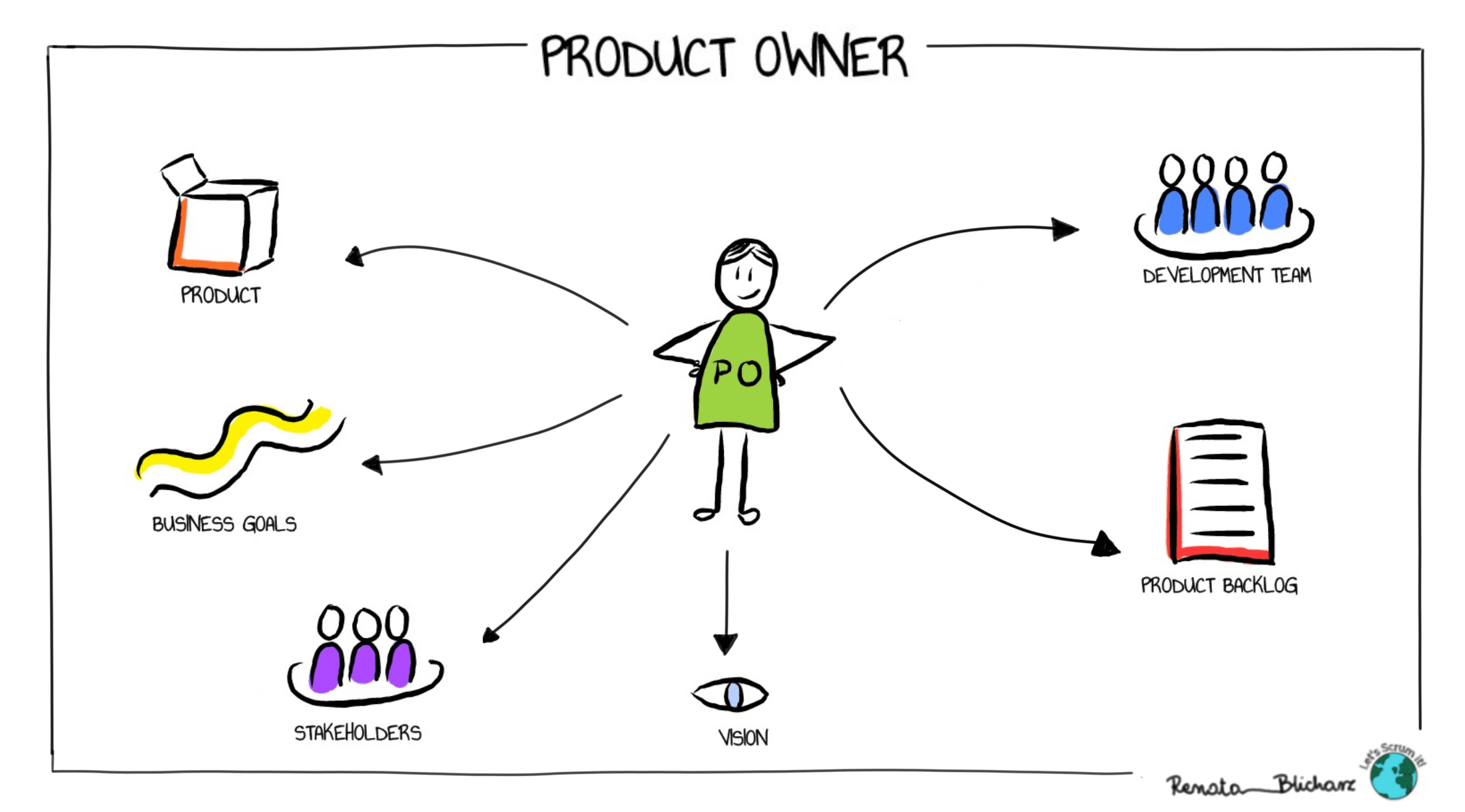
Scrum Roles #2 Product Owner
July 8, 2020 • 5 min to read
Who is the Product Owner? What are her or his responsibilities? Read this post to find out more about this Scrum Role.
Table of Contents
Introduction
As I mentioned in my last post, Scrum Team consists of the Development Team, Product Owner and Scrum Master. I’ve already described the Development Team and today I would like to tell you more about the Product Owner.
Who is the Product Owner
Let’s check what Scrum Guide says about it: > The Product Owner is one person, not a committee. The Product Owner may represent the desires of a committee in the Product Backlog, but those wanting to change a Product Backlog item’s priority must address the Product Owner.
This is important information - Product Owner is one individual, not a group of people. Why? The reason is simple - multiple people mean multiple decisions, visions and increased complexity.
![]()
What is the Product Owner responsible for?
Based on the Scrum Guide:
The Product Owner is responsible for maximizing the value of the product resulting from work of the Development Team. How this is done may vary widely across organizations, Scrum Teams, and individuals.
Ok, you may ask now - "What does it mean maximizing value?"
First of all, a Product Owner needs to have a deep understanding of the product. Based on the knowledge about the product, he or she can decide what direction of the development will be the most valuable. It can be done based on the market situation, company strategy or analysis of the customer needs. As it was described in the Scrum Guide, it can vary across companies.
The simple example from real life: the Product Owner receives the request from the higher management in the company that they want to implement some additional product functionality urgently.
Before the Product Owner makes any decisions, he or she needs to analyze all implications related to technical aspects, impediments, customer needs etc. Based on the analysis the Product Owner decides if the new action will be valuable for the product or not.
Product Owner & Product Backlog
As we can read in the Scrum Guide:
The Product Owner is the sole person responsible for managing the Product Backlog.
If you don’t know the Scrum yet, you may ask - "What is the Product Backlog?" It is a list of everything that is required, needed in the product. The Product Owner is responsible for creating this list of work items called "Product Backlog items" and managing it.
![]()
How can the Product Owner manage the Product Backlog?
All Product Backlog items should be clear and understandable for everyone in the Development Team. The most priority items should be fully explained to allow the team to plan their work accordingly.
Product Backlog should be visible to everyone in the Scrum Team to make sure all requirements and vision of the product are transparent.
Items need to be ordered by PO based on the business goals and strategy. The most important and priority work should be on the top of the Product Backlog.
During management of the Product Backlog PO should consider work required from the Development Team and decide how to optimize the value of their work.
Some of the above responsibilities can be done by different people (selected by PO), but the Product Owner remains accountable in terms of the Product Backlog management.
Product Owner - other responsibilities
The Product Owner is the only person who has authority to cancel the Sprint. It is a really rare case, but this decision can be made by the Product Owner due to technology or market changes.
The Product Owner is also the main link between business and the Development Team. She or he needs to fully understand business needs and clearly express them to the team.
In Scrum there is one event facilitated mostly by the Product Owner - Sprint Review:
All key stakeholders need to be invited by the PO to the meeting. He or she needs to explain what Product Backlog items were "Done" during the Sprint and what is the current status of the Product Backlog.
Together with all stakeholders and other members of the Scrum Team, the Product Owner analyzes the marketplace, budget and potential timeline.
![]()
Product Owner & Sprint Backlog
The Product Owner is responsible for Product Backlog, but what about Sprint Backlog? Sprint Backlog is created during Sprint Planning and includes items selected from the Product Backlog for the new Sprint.
The difference between Product Backlog and Sprint Backlog is that the first one is managed and can be changed by the Product Owner, while the other one belongs solely to the Development Team. It means that the Product Owner cannot update it in the Sprint or add anything. The Development Team can change it and renegotiate selected items with the Product Owner if it’s needed.
Moreover, the Product Owner plays the important role in clarification of the Product Backlog Items. If the Development Team has any concerns related to items selected for the Sprint, the Product Owner should help them and explain all unclear details.
Summary
To sum up the Product Owner’s role, it is one person who makes sure that all the actions within the Sprint are maximizing value of the product.
The Product Owner needs to be the link between all stakeholders and the Development Team. She or he should know deeply the product, business needs and marketplace in order to achieve the best results during the product development process.
The main responsibility of the Product Owner is the Product Backlog management including ordering, clarification of items and optimizing the Development Team’s work.
Would you like to read more about education?
Sign up for the Newsletter & join Let's Scrum it community!